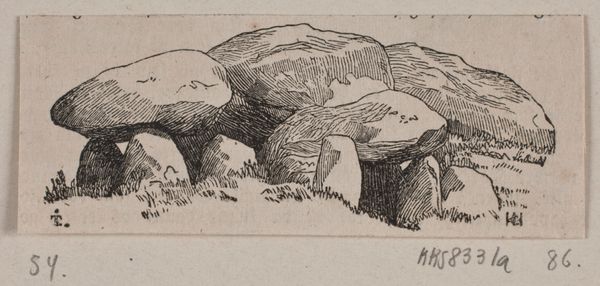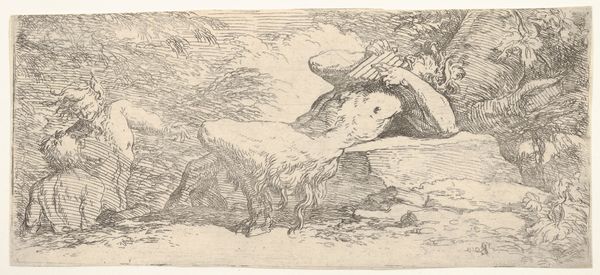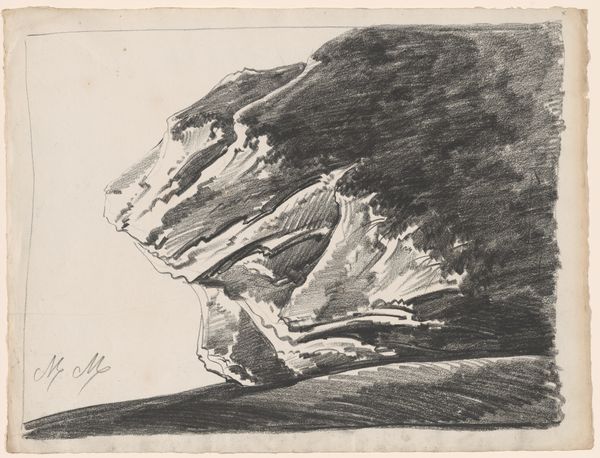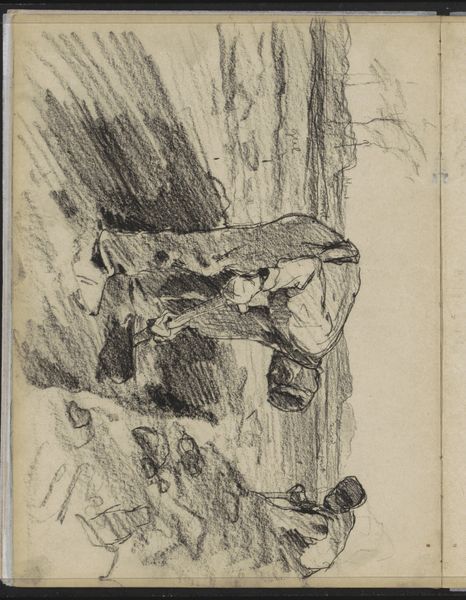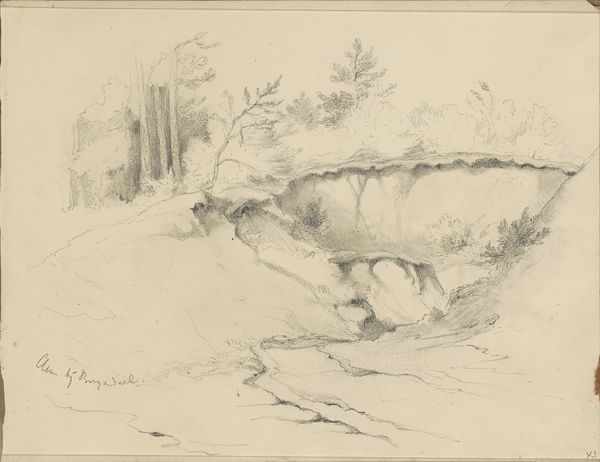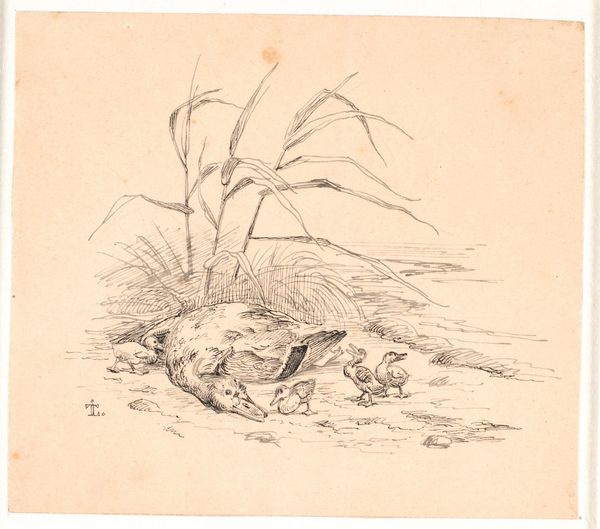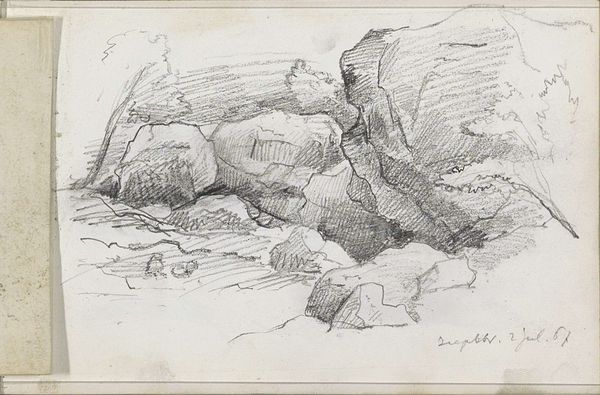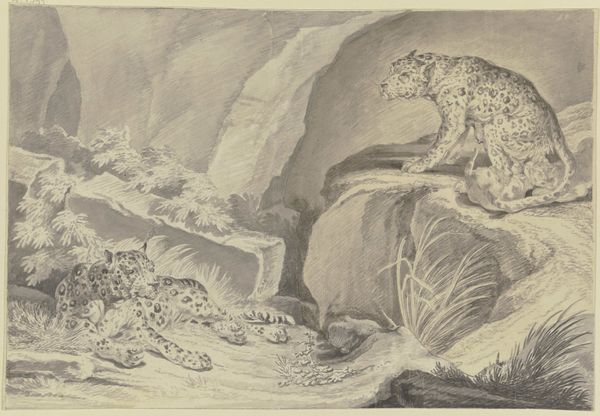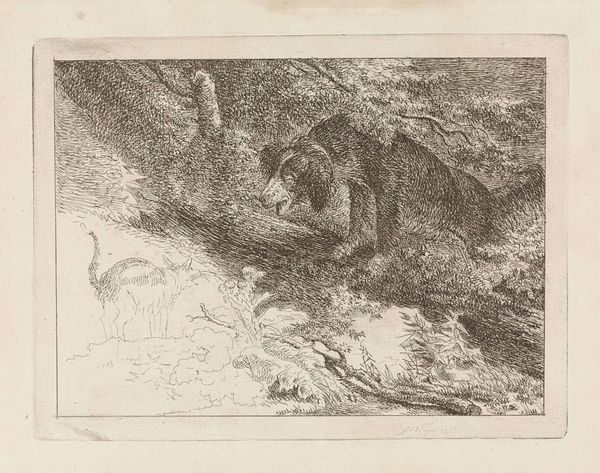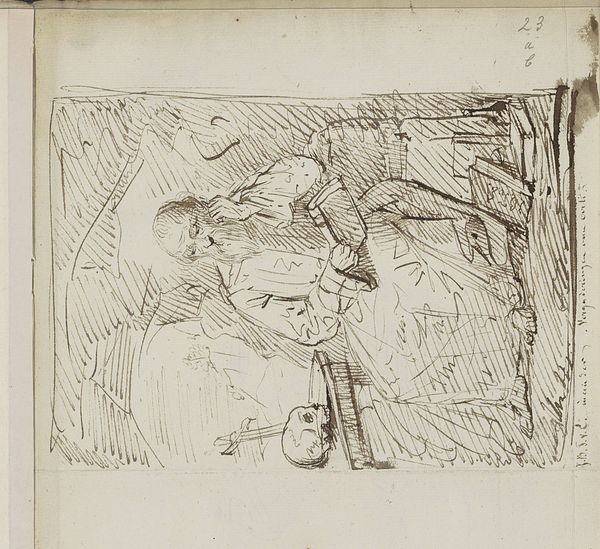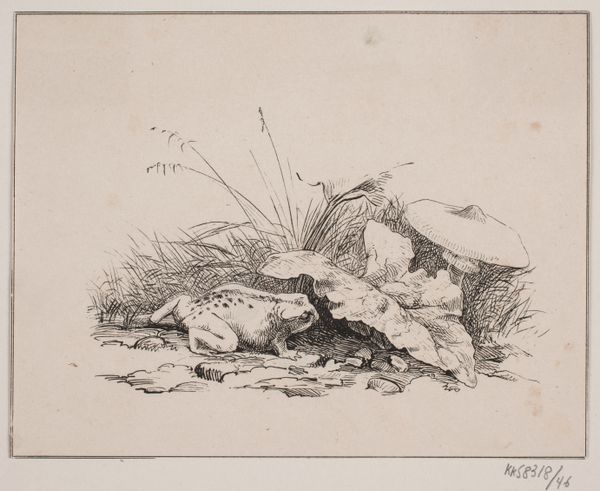
print, woodcut
# print
#
landscape
#
woodcut
#
line
Dimensions: 60 mm (height) x 84 mm (width) (bladmaal)
Curator: Here we have H. C. Henneberg's 1843 woodcut, "Illustration til 'Steenmonumenter'," currently held at the SMK, the National Gallery of Denmark. What strikes you initially about this small print? Editor: There's a somberness, a quiet dignity. The monument seems nestled, almost engulfed, by the landscape. The stark black lines enhance that feeling of permanence against a more ephemeral natural world. Curator: It’s interesting to see how Henneberg situates this ancient monument. This woodcut served as an illustration, and these monuments represented a romantic nationalist perspective on Denmark’s prehistory, suggesting a direct link between the present and the distant past. It invokes ideas about cultural origins and the inherent character of the Danish landscape. Editor: Absolutely. And within a broader political context, this type of imagery—ancient sites represented through idealized landscapes— often served as a means to solidify national identity and historical narratives, potentially overlooking the more nuanced and complex realities of those earlier societies. Whose stories are uplifted, and whose are obscured by this rendering? Curator: The woodcut’s deliberate use of line and contrast creates an aesthetic that speaks to both the grandeur and vulnerability of the monument. The very process of printmaking – the carving, the inking, the pressing – echoes the patient, laborious creation of the monument itself. The image emphasizes a specific interpretation of heritage—linking the physical landscape to the ideological landscape of 19th century Denmark. Editor: Indeed. I keep thinking about how the landscape seems to be both protecting and slowly consuming the monument, suggesting a constant negotiation between human creation and natural forces. Curator: A powerful tension indeed. Reflecting on this image, I see how it speaks to the intertwined relationships of landscape, nationhood, and the narratives we choose to inherit from the past. Editor: It serves as a reminder of the ongoing dialogue between art, history, and contemporary identity. Thank you for sharing it with me.
Comments
No comments
Be the first to comment and join the conversation on the ultimate creative platform.
